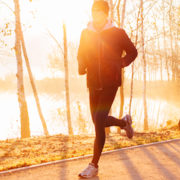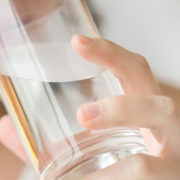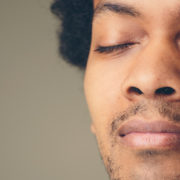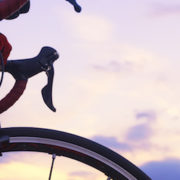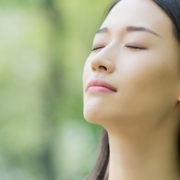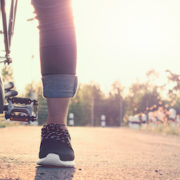Article by Cara Bradley | Found on Mindful.org
Cara Bradley hosts a weekly podcast series called On The Verge, short blasts of advice and essential practices and strategies to shift from “crazy busy” to living with more clarity and vitality.
Are you one of the millions that seek mindfulness practices to feel calmer and more at ease? Do you hope meditation will settle your thinking mind? In this episode Cara explains how breath training calms your nervous system and ultimately works to settle a busy mind.
Cara explains that when your body feels sluggish, your mind feels sluggish. When your body feel tense, there’s a good chance your mind will feel tense too. On the other hand, a calm body often reveals a calm mind. In other words, the state of your body reflects the state of your mind.
Welcome to On The Verge with Cara Bradley, weekly blasts of no-hype advice and essential practices to settle down, show up, and shift from crazy-busy to high-definition, high-voltage living.
I talk to a lot of people about meditation—a lot. A lot of people tell me “I’ve tried it, I know I should do it; I can’t stop my mind from thinking. I’ve got such a busy mind. What can I do? How can I do it? I can’t find the time.”
I’ve taken this all and really digested it because I feel like this mindfulness trend, this wave where everyone is now speaking about mindfulness practice, about the need to meditate, about the benefits of meditation—But I feel like most people don’t understand why. Why do I actually want to meditate. Why would I want to sit down for 15, 20, 30 minutes and follow my breath—what is that doing? I might feel a little better afterward, but really, why? And so I hope to answer some of those questions for you today. We’re also going to practice.
Why Do People Want to Meditate?
Why do we want to meditate, what does it do for us, what’s really happening, what is the purpose! Here it goes. What we’re really trying to do is to stabilize—to stabilize our nervous system. So what happens when we sit down for a few moments when we take a few deep breaths, as we’re going to do later on, is that we start to stabilize or balance our autonomic nervous system. Now you may remember some about your nervous system from biology in high school. Probably not. Some of you may be technical experts on the nervous system but I’m just going to give it to you really simply. We have these responses in our body. We’re either on heightened alert, stressed, kind of perched, right at the edge of our chair, ready for the next shoe to drop… or we’re relaxed, so relaxed that we’re sleepy, or asleep. But when we’re balanced, when those two responses are balanced, we feel clear and energized.
When we are simply humming along, sometimes heightened, sometimes relaxed, but really humming along right down the center, the midline, we feel awake and at ease. And that truly is the meaning of being mindful. Being alert to what’s happening but at ease in the moment.
But because of our conditioning in our society, we’re rarely there. We’re most of the time perched, stressed, heightened, right at the edge of our seat waiting for that next news alert, waiting for the next post that pisses you off on social media, waiting for the next confrontation. So we stay heightened, we stay stressed. We stay in this heightened state of alertness and this is very unhealthy as we all know. The stress response, a chronically stressed body, is incredibly unhealthy on all dimensions and at all levels of our system: physiologically, mentally, and emotionally. So why we meditate, why would we want to practice mindfulness meditation or some other form, is truly to stabilize and settle your nervous system, to bring your body into a more balanced state of being.
So when we balance our breathing—and the breathing is really the best gateway for doing this—balancing your breath is the entry point for settling your nervous system and ultimately calming your mind. So stabilizing our nervous system through breath, through rhythm, through movement as we teach at Verge Body Mind, helps you to come into a more stable and settled state of being. When you’re settled and stable, your mind will naturally calm down. Our mind produces thoughts, our brains produce thoughts, our nervous system has the synapses that are constantly firing such as seeing, hearing, smelling, feeling, tasting, thinking—it’s all the same stuff. Our nervous system produces these responses to our environment and produces these synapses, these little soap bubbles of experience that sometimes comes as a smell, and sometimes comes as a sight, sometimes comes as a thought. When our nervous system is agitated, naturally those synapses, those experiences are going to be agitated. When our body is agitated, our minds will be agitated. Our thinking will be more frenzied and frazzled. When our bodies are calm, when our nervous system is balanced, those neurosynapses will be more steady or be calmer, more settled.
Meditation simply means to become familiar with your state of being in this moment.
So we meditate and we can meditate, FYI, by walking in rhythm, by swimming, by gardening, by sitting down, and following your breath. Meditation simply means to become familiar with your state of being in this moment.
The Benefit of a Seated Meditation Practice
So I want to talk to you today about why you would want to do a seated meditation practice because I know many of you have tried. I talked to a lot of people who desperately want to feel better, who desperately want to slow down their busy mind so much to the point that they’ll do anything to feel more at ease and more peaceful in their everyday life. By practicing a seated meditation practice, even for five minutes as we’re going to do today, you can start to stabilize your nervous system, helping you to settle your mind and quiet the chatter.
You know how to settle your body if your heart is racing really fast. So, say something happens out of the blue: Somebody cuts you off on the highway in a way that just startles you and sends you into this stress mode where your body is on heightened alert. You know what to do, you know how to settle yourself. You calm yourself by deepening your breath. You just do it; we all do it. Babies know how to settle themselves. Children know how to go into a child’s pose and settle themselves. We instinctively know how to settle our bodies and our minds but we’ve just become so conditioned to being in this heightened state of alertness and stress that we’ve forgotten. So a seated meditation practice, it’s like lifting the heavy weights at the gym. The walk is amazing, the walk in the woods, the yoga practice, incredible, but sometimes just sitting down and following and balancing your breath for a few minutes it stabilizes you directly, immediately, and profoundly.
We instinctively know how to settle our bodies and our minds but we’ve just become so conditioned to being in this heightened state of alertness and stress that we’ve forgotten.
Today, I want to just give you a little bit more fuel, a little bit more understanding as to why you want to take those five, 10, 15, 20 minutes every day to train your brain in how to be in this alert and easy way of living more often. Even in challenging situations you can learn to access this alert, easy way of being we call “the mindful state of being” where everything you do you do better, by the way. So there’s a reason for wanting to be there because not only do your physical systems hum, your hormones balance, your body feels more at ease and brighter, but your mind is clearer. The chatter is less frenzied so that you can get underneath all those repetitive thoughts and start to connect with the wisdom that’s emerging in every single second of your life.
So we want to tune ourselves, tone ourselves, train ourselves to hum in this balanced way so that we can access that intelligence that’s underneath the mental chatter that’s underneath the busyness.
So first we need to settle the muddy waters. And that’s what a seated practice—and other practices—but the seated practice can do for you. It’s why you’d want to get up in the morning and sit down for five or 10 minutes: to stabilize your nervous system, to quiet the chatter, to settle your mind, to prepare you for an amazing day of insight, creativity, and connection.
Practice: 5 Breaths of Mindfulness
We’re going to try a very simple practice. It’s a simple seated practice, in which we’re following our breath, counting our breath, and then pausing after five breaths to sense what it feels like to be stable, to be settled, to be available for that “source intelligence,” for that deep wisdom, for the direct experience to emerge.
Begin in a seated position. Place your feet to the floor. Place your hands on your knees and sit upright in a relaxed but alert way.
For a moment, notice your body: Notice your feet on the floor, your seat on the chair, your hands on your thighs, perhaps your upper back leaning against the chair. Notice your head in space as it finds its way to alignment on top of your shoulders and your spine. Just notice your body in space, in this moment: the experience of being in your body.
Now, notice any sensations that may be arising: Notice tingling, coolness, heat, throbbing, pulsing. Coming into your body in this way brings you more into contact with the present moment; as we drop from thinking to being, we shift into a more experiential state. We’re actually living in the moment.
Shift your attention to your breath, to your experience of breathing. What does it feel like to be breathing right now?
We’re going to start counting our breath. We’ll take five breaths. By counting our breaths, it holds your mind in your breath in this moment. So for the counting, open your eyes just halfway. Find a spot on the floor in front of you. Fixing your gaze helps you to stabilize when your eyes flitter about, your mind is flittering about. So just by lightly setting your gaze at one spot, it can help anchor your mind to this moment.
We’ll begin by counting five breaths. I’ll take you along for the first round and then I’ll leave you alone for the next few rounds. So together: inhale, exhale, one. Inhale, exhale, two. Inhale, exhale, three. Inhale, exhale, four. Inhale exhale, five.
Pausing now, keep your eyes open and notice your body, notice your surroundings. Notice any sounds, sensations, smells, tastes, thoughts. Notice what it feels like to be you right now. Recognizing presence recognizing what it feels like to be alive in this moment below the chatter, beyond the thinking; you and you alone in this moment.
And now once again fix your gaze. And we’ll begin again counting five breaths. So do this on your own right now. Stay with it.
After your five breaths, once again notice—so glimpsing what it feels like to be right here in your body, in this moment, showing up fully for your experience. If a thought comes, let it come, let it go. If a smell comes, let it come, let it go. A sound? Same thing. We’re allowing life to move. Not trying to fixate or stop anything from happening yet experiencing the aliveness, the emerging aliveness, the emerging intelligence that’s arising in every single second of our lives. What does it feel like to be in your body, in this moment, right here, right now.
Repeat one more round of five breaths. Set your gaze, bring your attention back to your breath, and begin counting.
When you’re through with your five, release: release this seated position; just wiggle your arms, wiggle your toes, maybe move your spine about, lift your gaze, lift your chin and look around.
Notice your experience right now. Noticing how your body feels in this moment, how you feel, how your mind feels. Do you feel brighter, lighter, more at ease more alert? If you do, yes! Awesome. If you don’t, that’s OK, too. By settling and steadying our mind on just five breaths, we start to shift our nervous system from being in this alert or this rather perched, stressed, agitated, on-guard state to being more open and at ease and awake in the moment to everything that’s arising. As we start to settle the water, as we start to stabilize our minds, the chatter, we’re able to then discern and sense and experience a deeper level of knowing, a deeper source of information, a more natural emerging intelligence that’s arising constantly in every second.
So why do we meditate? Why do you want to? Why do you need to? Why should you? It’s to stabilize. It’s to stabilize your nervous system first through breath awareness and when you do that, when you calm your nervous system, you calm your body, which calms your mind, which opens you up to the source, to this floodgate of genius, of brilliance, of aliveness. That’s why you meditate.
Grounded in the belief we are all unique beings, we begin each new client with a meticulous bio-mechanical evaluation, assessing each joint in its relationship to the movement of the body as a whole. Our therapists are skilled at reading the unique story your body tells, and treating everything from the bottom of your foot to the top of your head.
Bodywise Physical Therapy is located in Portland, Oregon. The Bodywise approach is wholistic, individualized, and can benefit people of all fitness levels. While Bodywise has always specialized in general orthopedics, spine rehabilitation, and sports medicine, they have evolved into a truly wholistic practice integrating Hands-on treatments with Mindfulness, Pilates, Trauma Release Exercise, Womens Health and Lymphedema.
